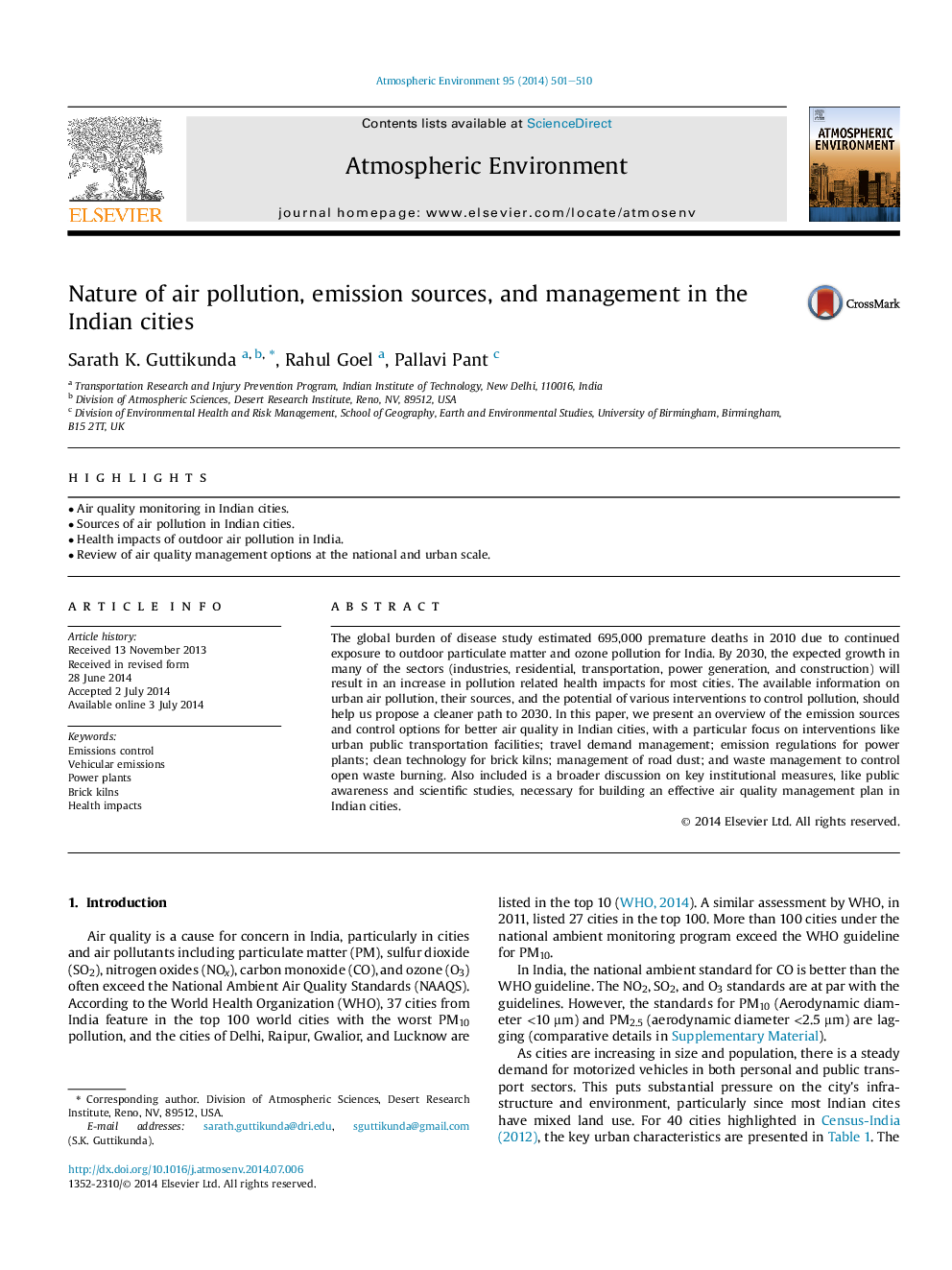| Article ID | Journal | Published Year | Pages | File Type |
|---|---|---|---|---|
| 6339282 | Atmospheric Environment | 2014 | 10 Pages |
Abstract
The global burden of disease study estimated 695,000 premature deaths in 2010 due to continued exposure to outdoor particulate matter and ozone pollution for India. By 2030, the expected growth in many of the sectors (industries, residential, transportation, power generation, and construction) will result in an increase in pollution related health impacts for most cities. The available information on urban air pollution, their sources, and the potential of various interventions to control pollution, should help us propose a cleaner path to 2030. In this paper, we present an overview of the emission sources and control options for better air quality in Indian cities, with a particular focus on interventions like urban public transportation facilities; travel demand management; emission regulations for power plants; clean technology for brick kilns; management of road dust; and waste management to control open waste burning. Also included is a broader discussion on key institutional measures, like public awareness and scientific studies, necessary for building an effective air quality management plan in Indian cities.
Related Topics
Physical Sciences and Engineering
Earth and Planetary Sciences
Atmospheric Science
Authors
Sarath K. Guttikunda, Rahul Goel, Pallavi Pant,
